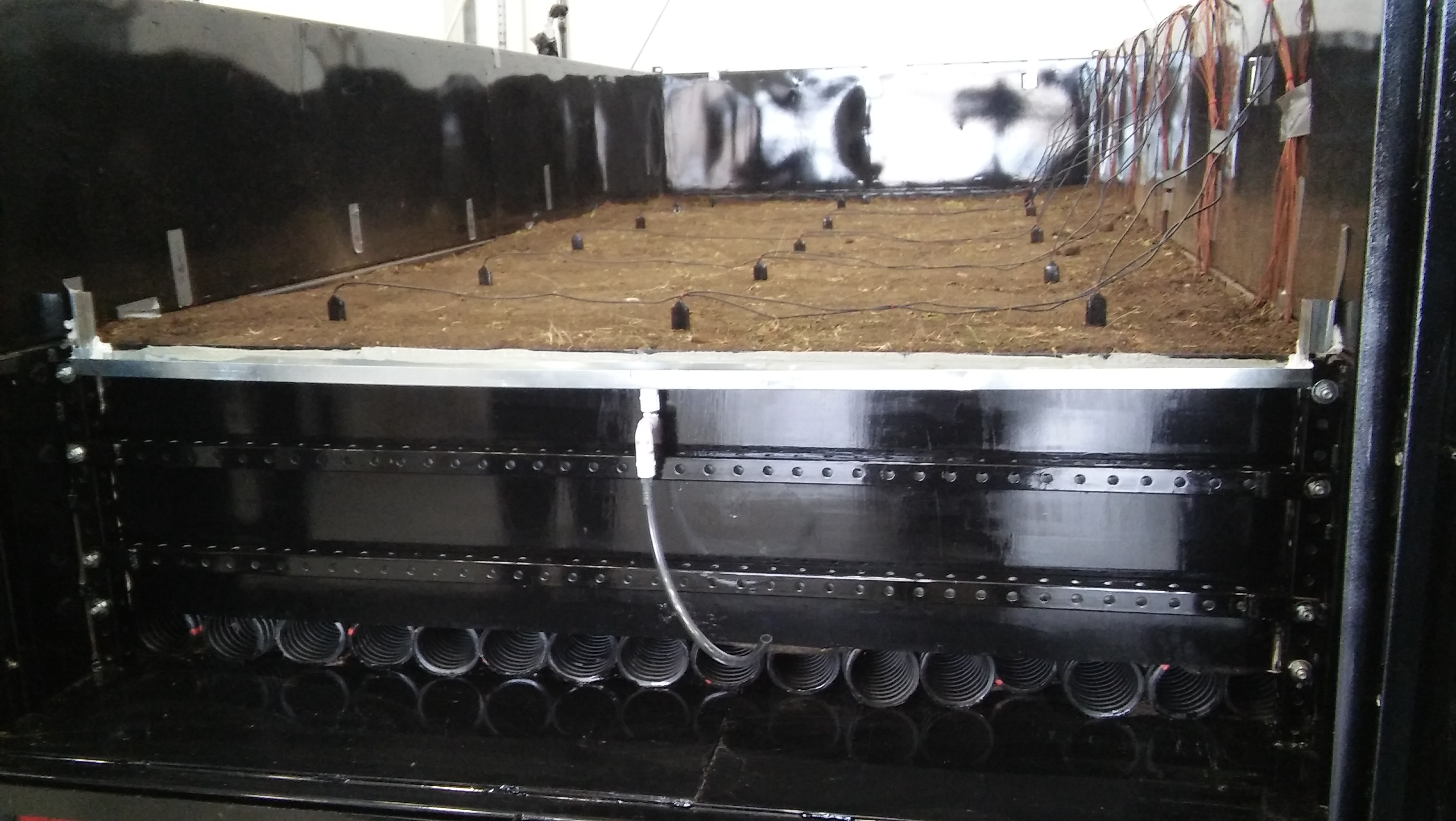Project lead of the Mine Overlay Test Facility Dr. Jeff McDonnell.
Mine closure and reclamation is a costly process that often takes researchers years to perfect, however, a new facility at the University of Saskatchewan is trying to change that.
The university recently unveiled the Mine Overlay Site Testing or MOST Facility to the public, which is an indoor facility that can test mine cover design systems, a process often used during mine reclamation.
Mine cover system design is a complex and expensive process and if done incorrectly can cause severe damage to the environment. This is why researchers often take years to ensure the cover systems are designed effectively.
The MOST facility is hoping to significantly reduce the time needed to research these systems by recreating the key variables affecting the reclamation process like climate, slope and vegetation.
“Here we can do these covers in a much shorter time,” said project lead Dr. Jeffrey McDonnell, a professor of Hydrology and Associate Director of the Global Institute for Water Security. “We can test freeze/thaw cycles, a thing that might take years and years to understand in a natural setting we can do in weeks or months here in controlled settings.”
The project is the first of its kind at this scale.
The MOST facility uses a partially controlled environment that can replicate several key processes in the mining reclamation process such as climate, slope and vegetation specifically in colder areas like northern Saskatchewan and Canada.
“What we are hoping is to better understand how these natural systems evolve and to engineer systems that are behaving according to how natural systems behave,” said Dr. McDonnell.
Dr. McDonnell along with other representatives are projecting the MOST research facility will bring long-term benefits to the mining industry in terms of reducing time and resources in implementing effective mine overlay designs.
“Mine closure is the biggest cost of the mining sector and mine closer equals mine covers,” said the Hyrdrology professor. “We are hoping to usher in new and more efficient designs that will be more environmentally friendly going forward.”
The MOST facility is expected to be fully ready for operation by the end of 2016.

